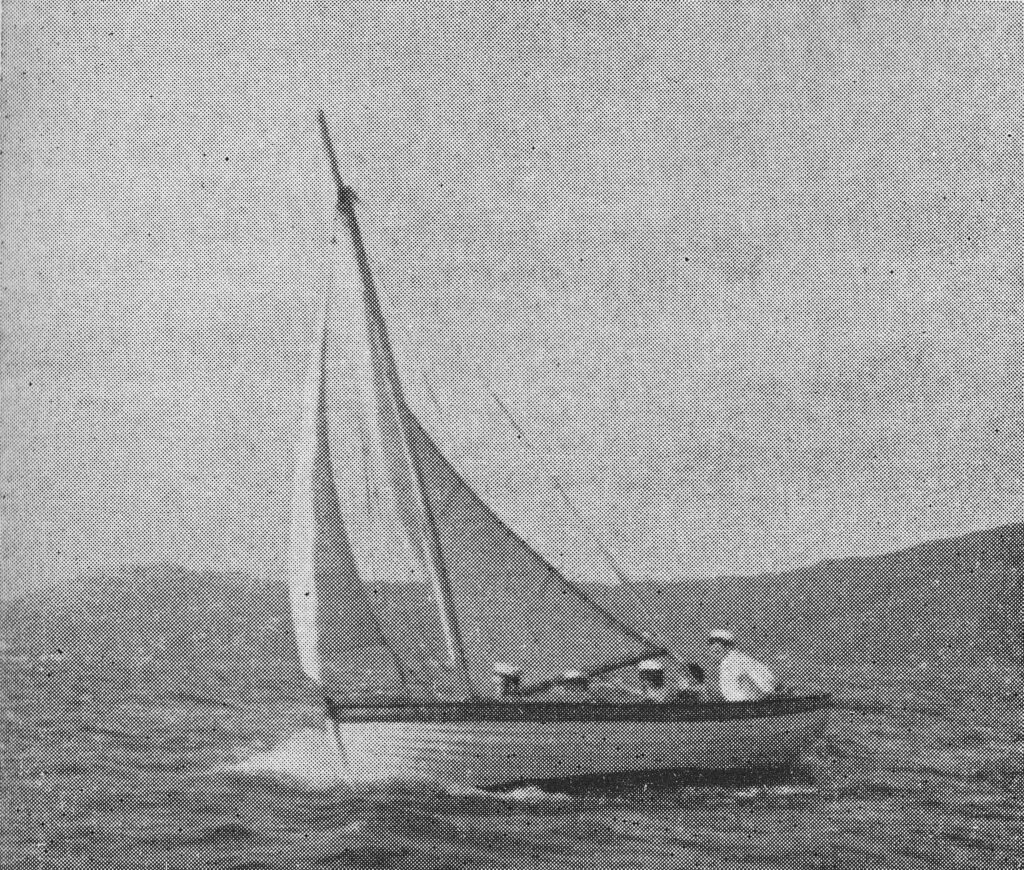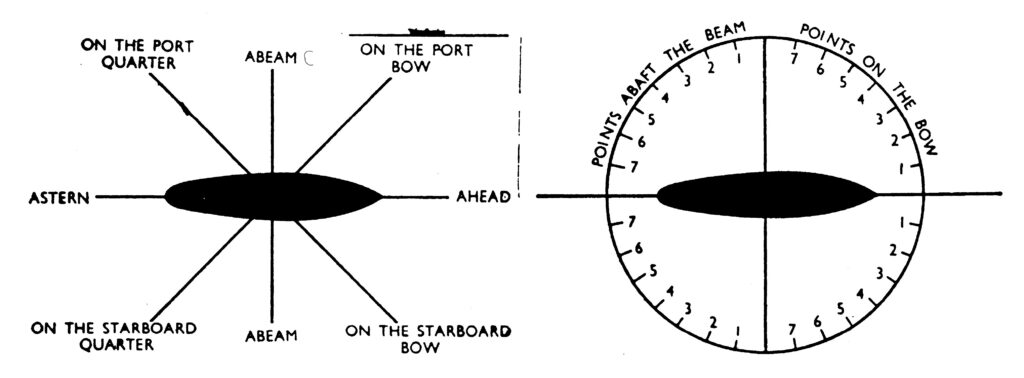Rule of the Road at Sea
The international regulations for prevention of collisions at sea, commonly known as the “Rule of the Road”, are to the seafarer what the highway code is to the driver of a car. Steering and sailing rules, which form a most important part of the regulations, tell them when they must give way to another vessel and when they can expect another vessel to give way to them.
The steering and sailing rules direct that all mechanically propelled vessels, and this includes boats under oars, shall keep clear of vessels under sail, and that all vessels keep out of the way of a ship they are overtaking.
The main principles are:
That each Captain is responsible for the safety of their own ship.
That one ship should hold their course and speed.
That the ship which has to keep clear shall do so by altering course or reducing speed and avoid passing close ahead of the other.
That, broadly speaking, ships “keep to the right”.
Do big ships have to obey the international rules in restricted water?
The answer to that is: It is your duty to keep out of the way of big ships in channels and near wharves. This is a New Zealand Government regulation contained in a publication called the General Harbour Regulations. It makes sense since small vessels are more manoeuvrable than large ones and can use shallower water.
The actual regulation reads:
“The master or person in charge of every motor launch, yacht, or small sailing or rowing boat shall, when that vessel is in a narrow, confined channel, or when within 500 metres any wharf, keep out of the way of any vessel of 500 tons net register or upwards.”
In diagrammatic style the basic rules of international prevention of collision are shown on the following pages.
What happens if you don’t observe these rules?
Well, you are guilty of a crime, and any damage caused through that lack of observance will have been caused by your wilful neglect—which boils down to the fact that you will probably have to pay for it.
But this is a very strict reason. The main reason for following the rules is to be courteous and safe.
Caution should be exercised at all times. Never take chances by relying entirely upon the speed and manoeuvrability of your vessel, or by guessing at the capabilities of another vessel.
Rule 18: When two power-driven vessels are meeting end on, each shall alter course to starboard (right) so as to pass on the port side of the other.

Rule 19: When two power-driven vessels are crossing so as to involve risk of collision, the vessel which has the other on her starboard (right) side shall keep out of the way.
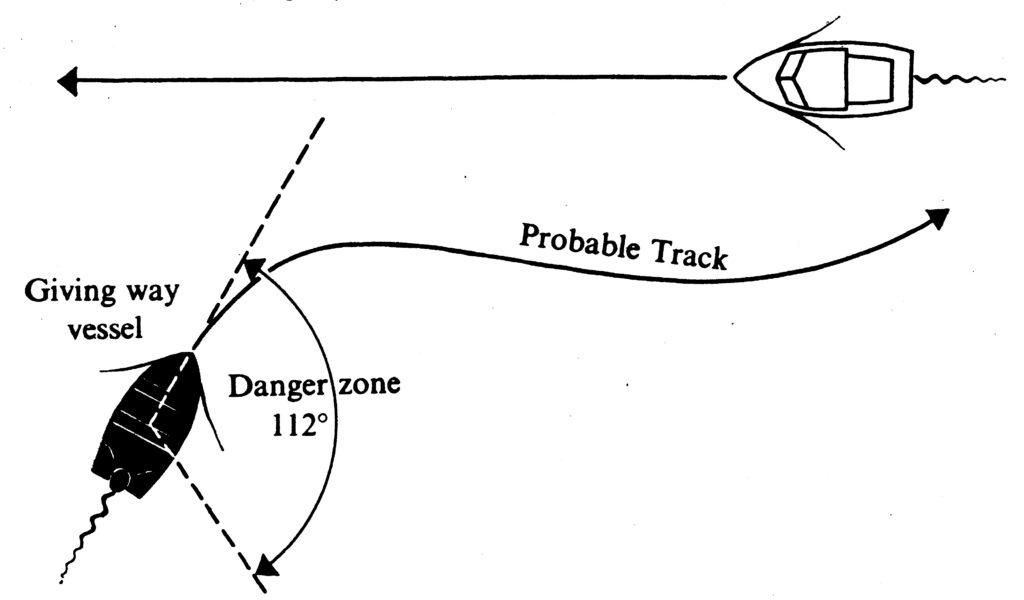
Rule 20: When a power-driven vessel is in danger of collision with a sailing vessel, the power-driven vessel gives way.
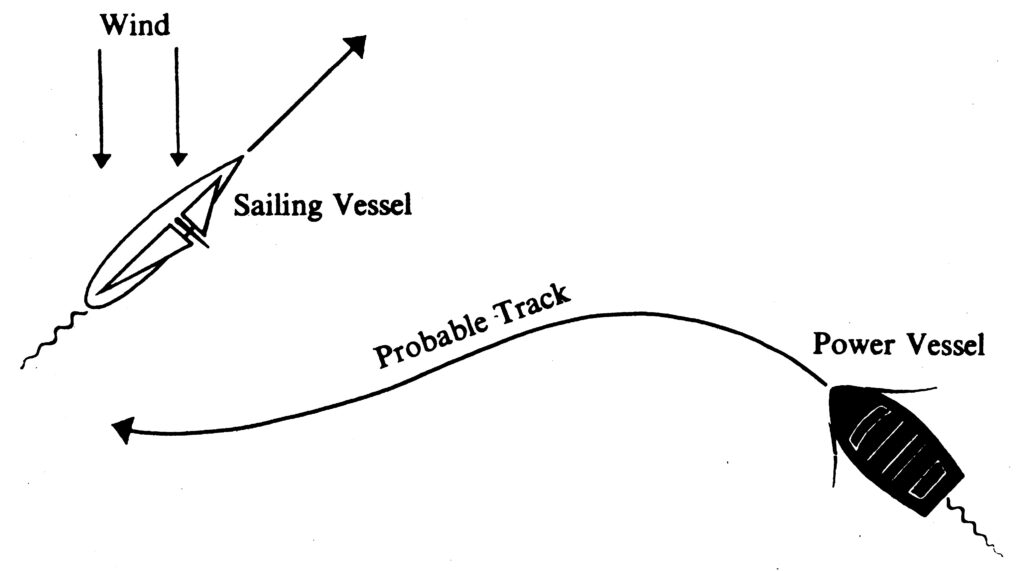
Rule 21: When another vessel gives way to you under the rules, you are obliged to maintain your course and speed.
Rule 22: When giving way to another vessel, avoid crossing ahead of that vessel.
Rule 23: If necessary use your motor to stop your boat go astern—but only if you are the giving-way vessel.
Rule 24: The overtaking vessel gives way. This applies to any overtaking vessel, which includes sailing vessels.
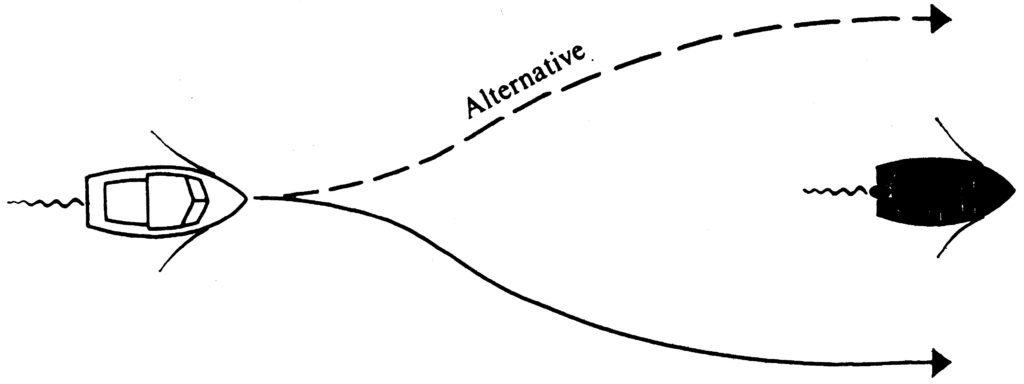
Rule 25: When in narrow channels keep to the starboard (right-hand) side.
Sailing Vessels
Rule 17(a): When two sailing vessels are approaching one another, so as to involve risk of collision, one of them shall keep out of the way of the other as follows:
(i) When each has the wind on a different side, the vessel which has the wind on the port side shall keep out of the way of the other.
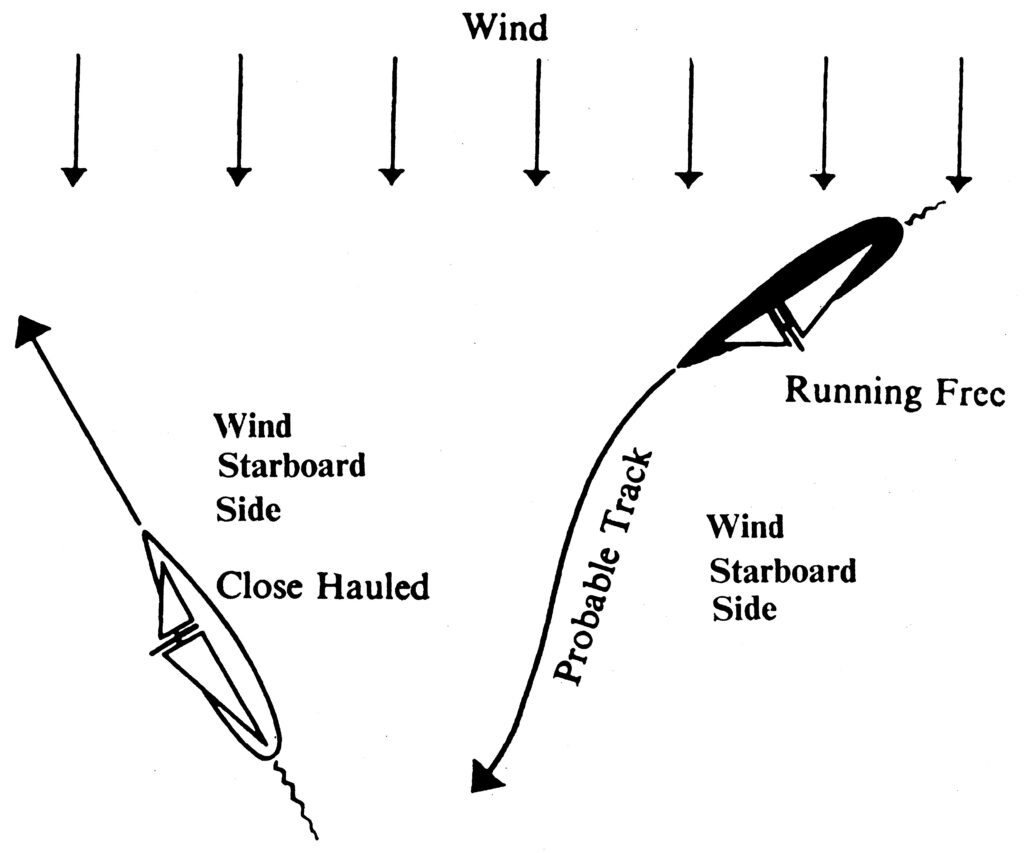
(ii) When both have the wind on the same side, the vessel which is to windward shall keep out of the way of the vessel which is to leeward.
Rule 17 (b): For the purposes of this rule the windward side shall be the side opposite to that on which the mainsail is carried.
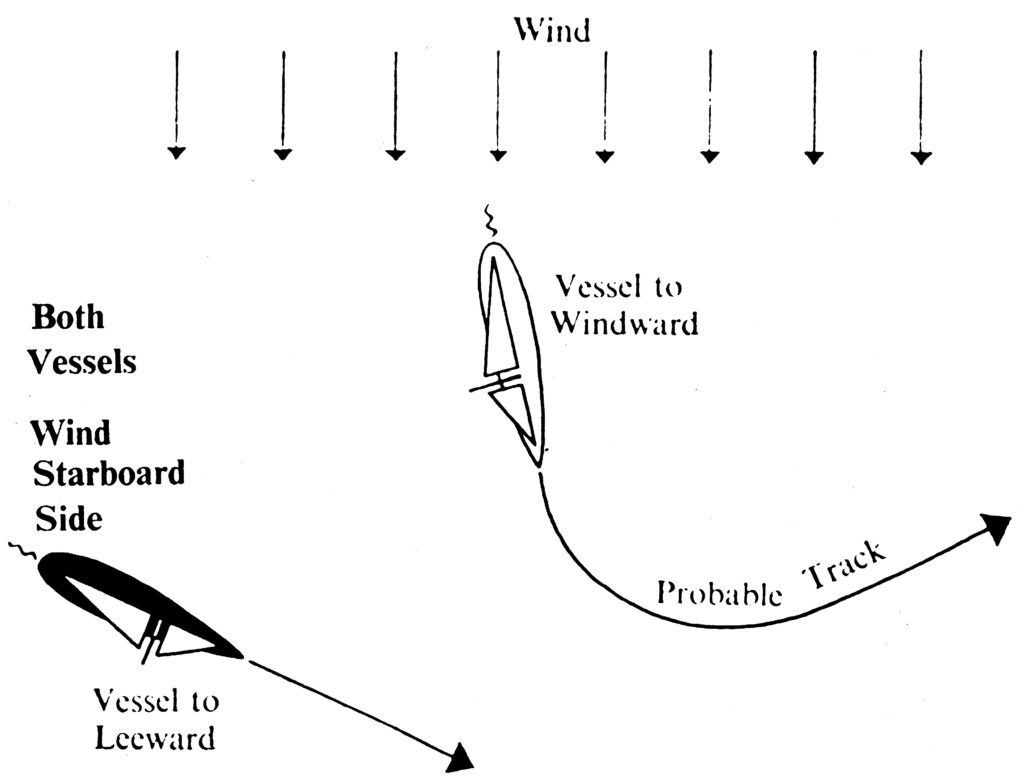
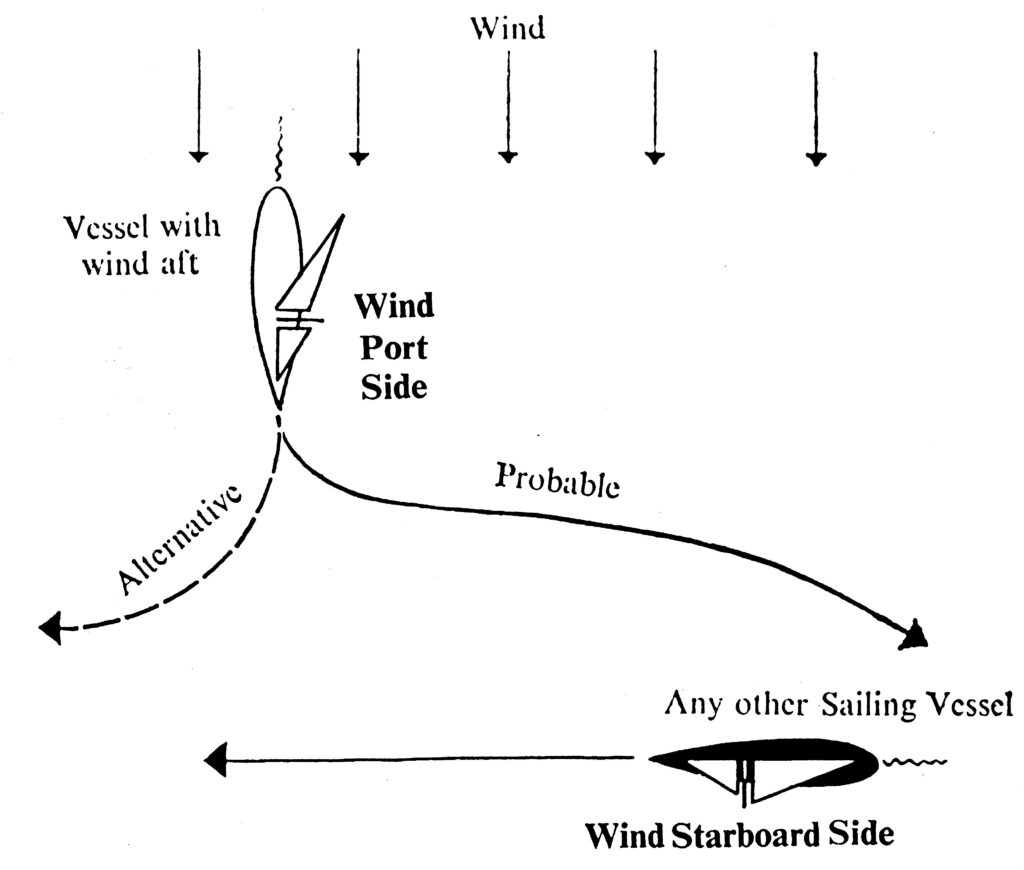 Note: The collision rules have been condensed and simplified as a guide. Attention is drawn to the regulations themselves for full details and amendments.
Note: The collision rules have been condensed and simplified as a guide. Attention is drawn to the regulations themselves for full details and amendments.
Sound Signals
When two vessels are in sight of one another

Vessels in Fog
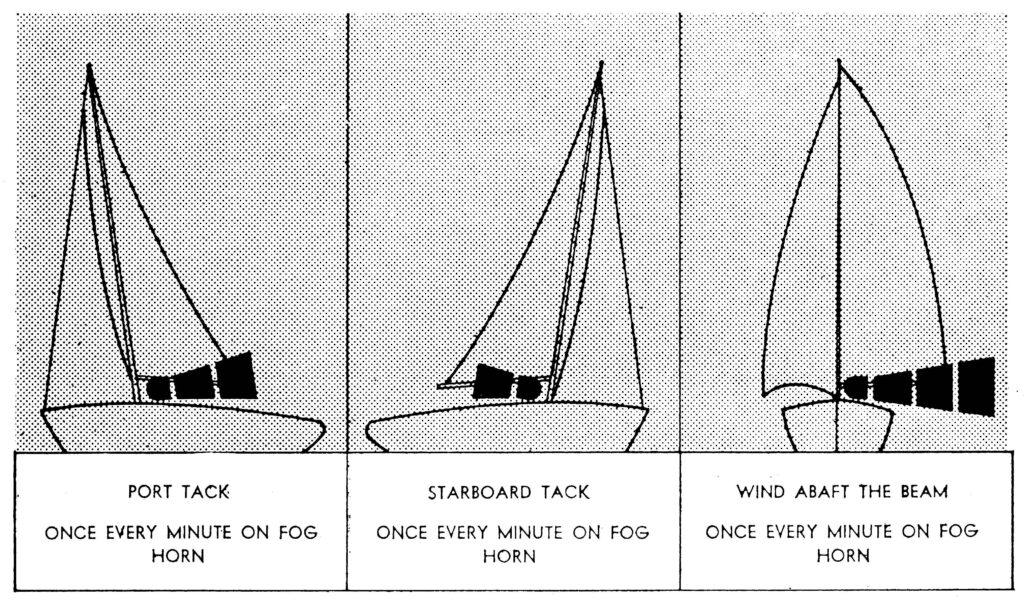
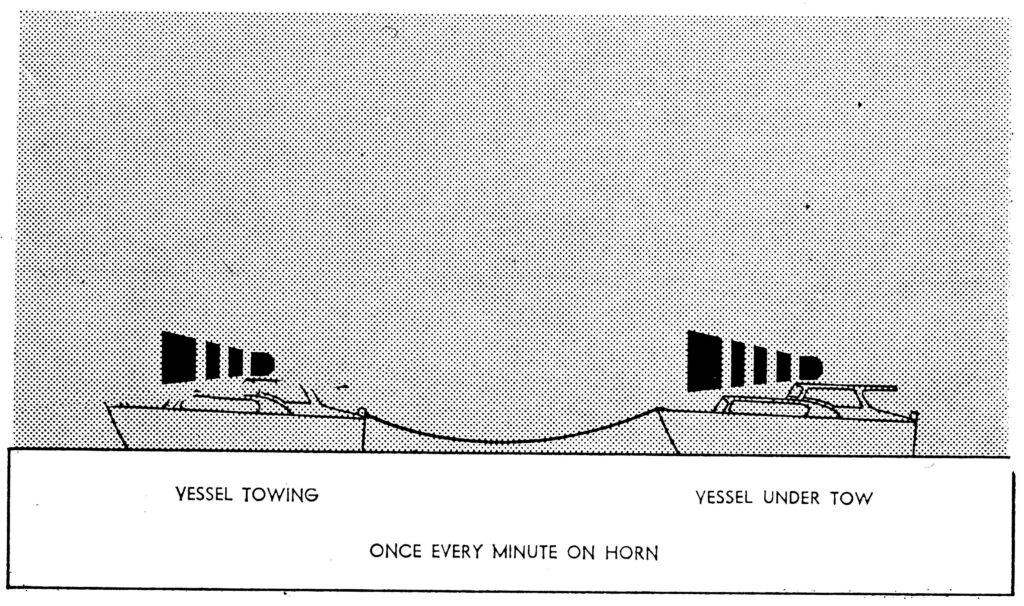
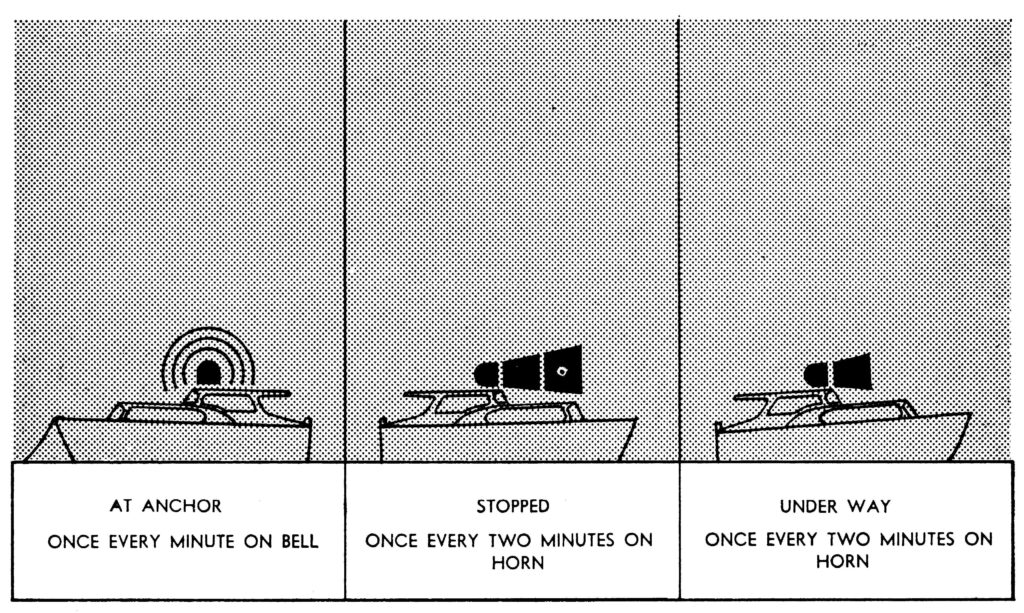
In Fog:
Steam vessel having way upon her | 1 long blast on the whistle every two minutes |
Steam vessel under way but stopped | 2 long blasts on the whistle every two minutes |
Sailing vessel under way on the port tack | 2 blasts on the foghorn every minute |
Sailing vessel under way on the starboard tack | 1 blast on the foghorn every minute |
Sailing vessel with the wind abaft the beam | 3 blasts on the foghorn every minute |
Vessel at anchor | 5 seconds’ rapid ringing of the ship’s bell every minute |
Navigation Lights
For Steam Vessels:
Steaming Light: One bright light forward (e.g., on the foremast) visible right ahead to two points abaft the beam on either side. A second steaming light may be carried similar to the first but fixed further aft and higher than the first light.
Side Lights (sometimes called Bow Lights): These are placed lower than the steaming lights. On the port side a red light shows from right ahead to two points abaft the port beam. A green light shows from right ahead to two points abaft the starboard beam.
Stern Light (sometimes called Overtaking Light): All vessels show a white light aft from right astern to two points abaft the beam on the either side about the same level as the side lights.
For Sailing Vessels:
Sailing vessels and vessels under tow, show side lights and stern light only.
For Standard Boats:
Standards and similar small open boats under way at night show an all-round white light where it can best be seen, or carry a torch which is shown in plenty of time to prevent collision:
The Motor Launch Regulations
Harbour boards have their own bylaws for the waters under their control, so the Motor Launch Regulations 1962 apply to all other sea waters and to all navigable lakes and rivers. Many harbour boards have made their bylaws similar in extent to the regulations to ensure as far as possible that there is uniform throughout the country.
Over recent years many complaints have been lodged that the noise of boats has disturbed local residents, picnic parties, and fish.
Do you know that the exhaust from your boat motor must be discharged through an efficient silencing device?
Other complaints have also been received about the behaviour of power boats and water skiers in anchorages and near crowded beaches.
Do you know that it is against the law to travel at a greater speed than 5 knots when within 200 m of the shore or when passing within 30 m of any other vessel, whether under way or moored, or any person bathing or fishing?
With the upsurge of the sport of water skiing it became necessary to provide for some means for the skier and tow boats to have access through the speed restricted area when proceeding to and from the shore.
Water skiers are unable to proceed at so low a speed as 5 knots.
Do you know that water skiers and their tow boats may not leave or approach the shore except in a properly designated “access lane” or where a special area of water has been set apart in which the speed restrictions do not apply?
It is difficult for a tow-boat driver to watch a skier and the water ahead at the same time.
Do you know that boats towing water skiers must carry another person as well as the driver?
There are many navigable waters less than 400 metres across and under normal circumstances prohibited to vessels travelling at a greater speed than 5 knots.
Provision, however, has been made in the regulations for suitable parts of such waters to be declared available for use by motorboats and water skiers where the 5 knot speed restriction would not apply.
As with motorcars, drivers of speed boats should be a responsible age.
Do you know that in order to drive any power boat capable of 10 knots or more, the driver must be at least 15 years old?
From time-to-time special regatta days, boat races, speed trials, etc., require to be held in areas where no access lanes or special areas have been declared.
Supervising officers have been appointed in many places. They have power to authorise the suspension of the Motor Launch Regulations for special regatta days, etc.
Yacht Racing Rules
Where possible Sea Scouts sail their races to the “International Yacht Racing Union”, Yacht Racing Rules. These rules are contained in a booklet available from marine shops.
